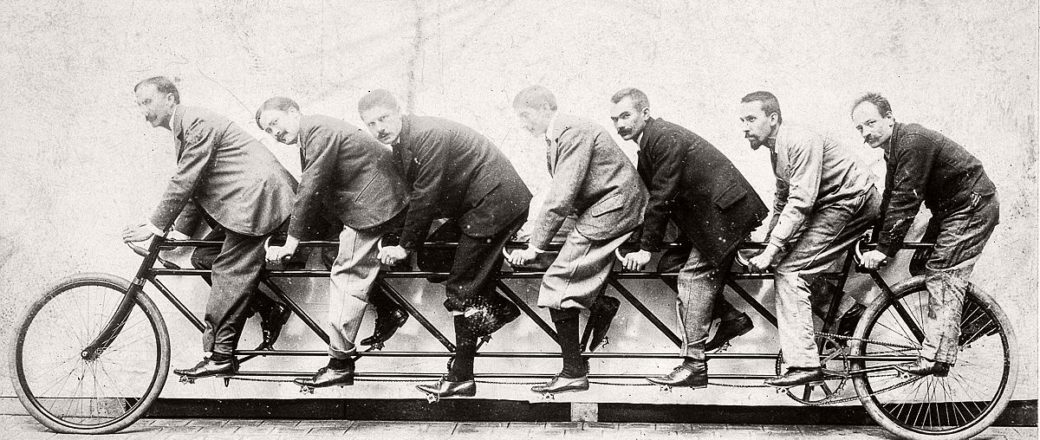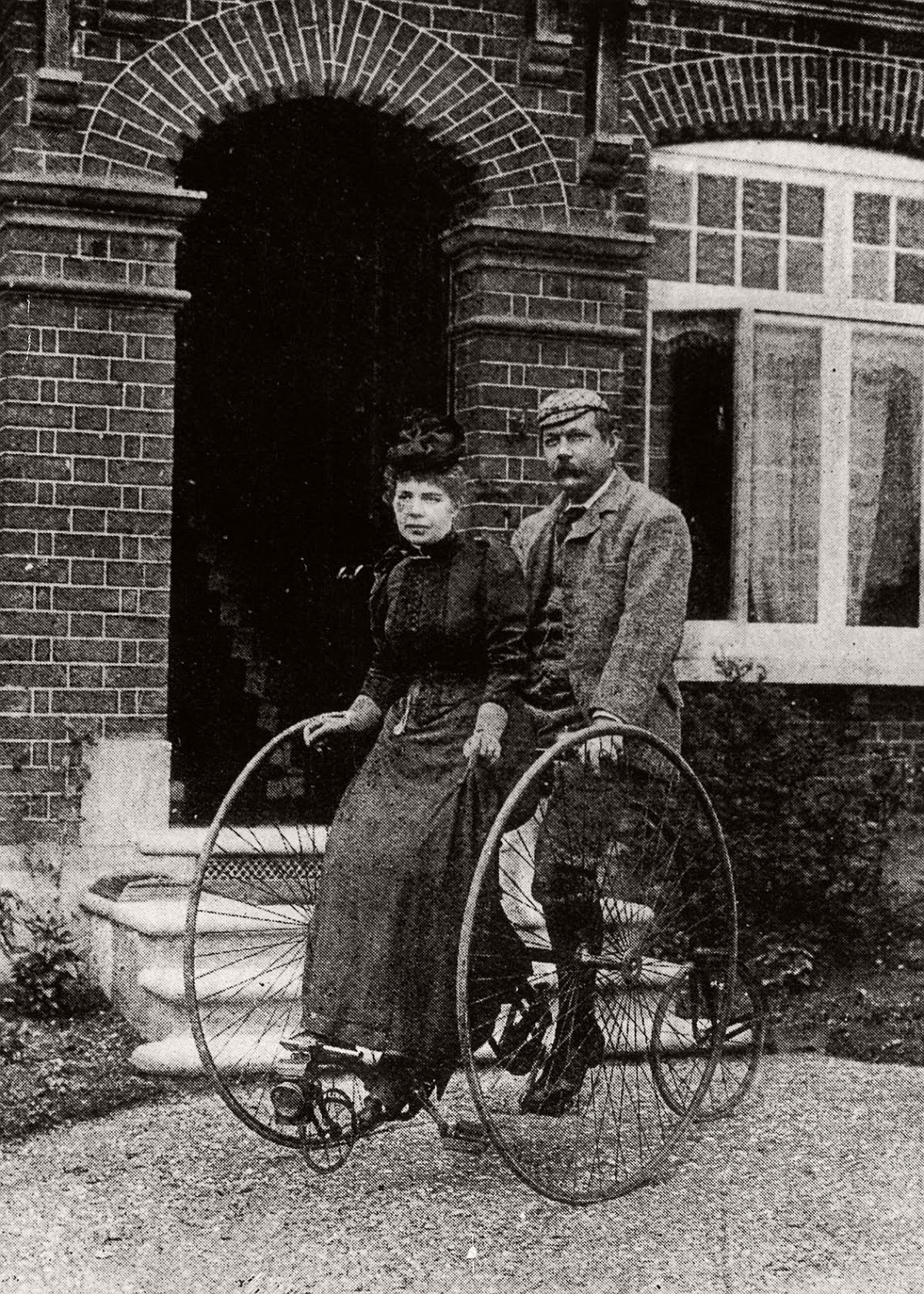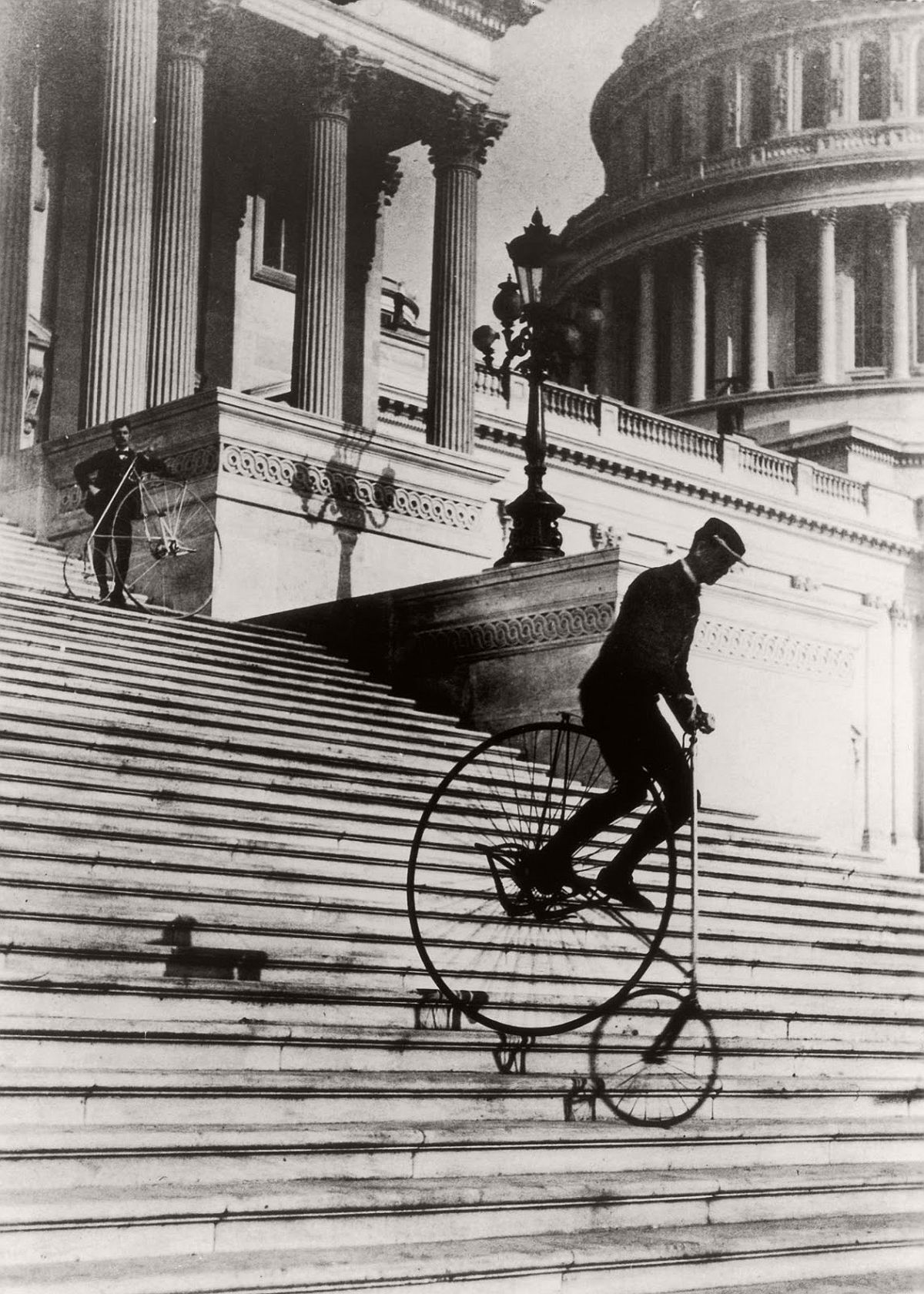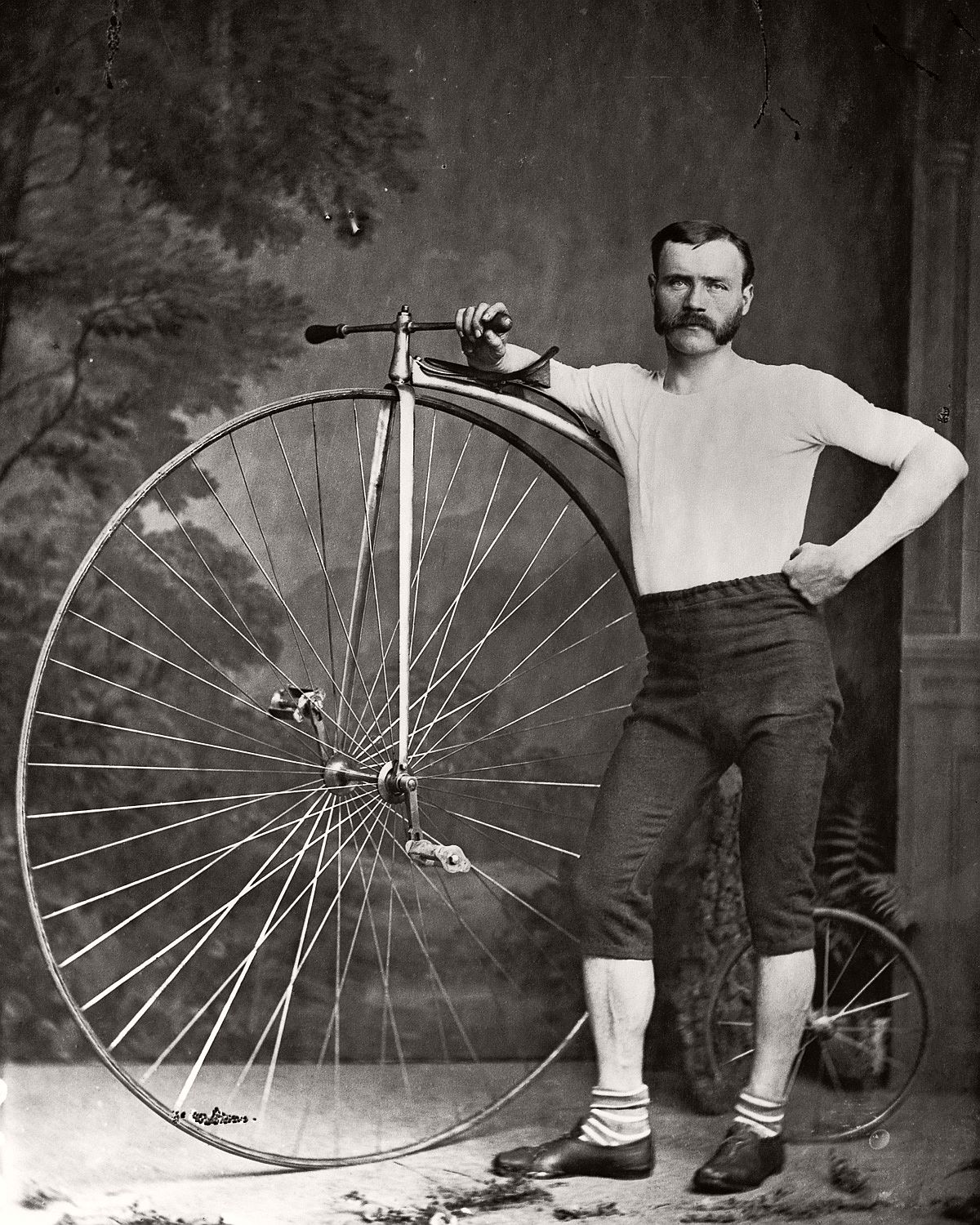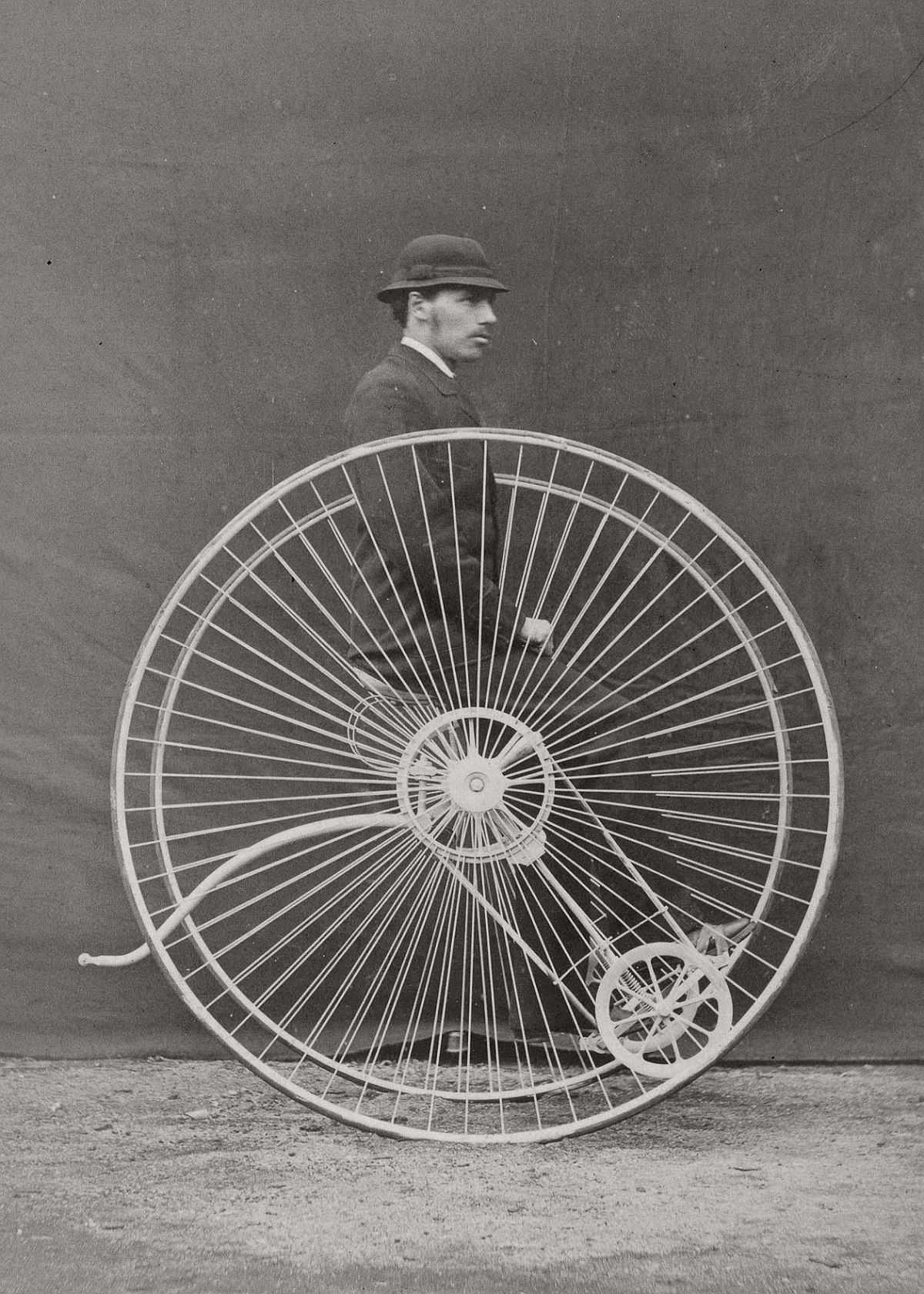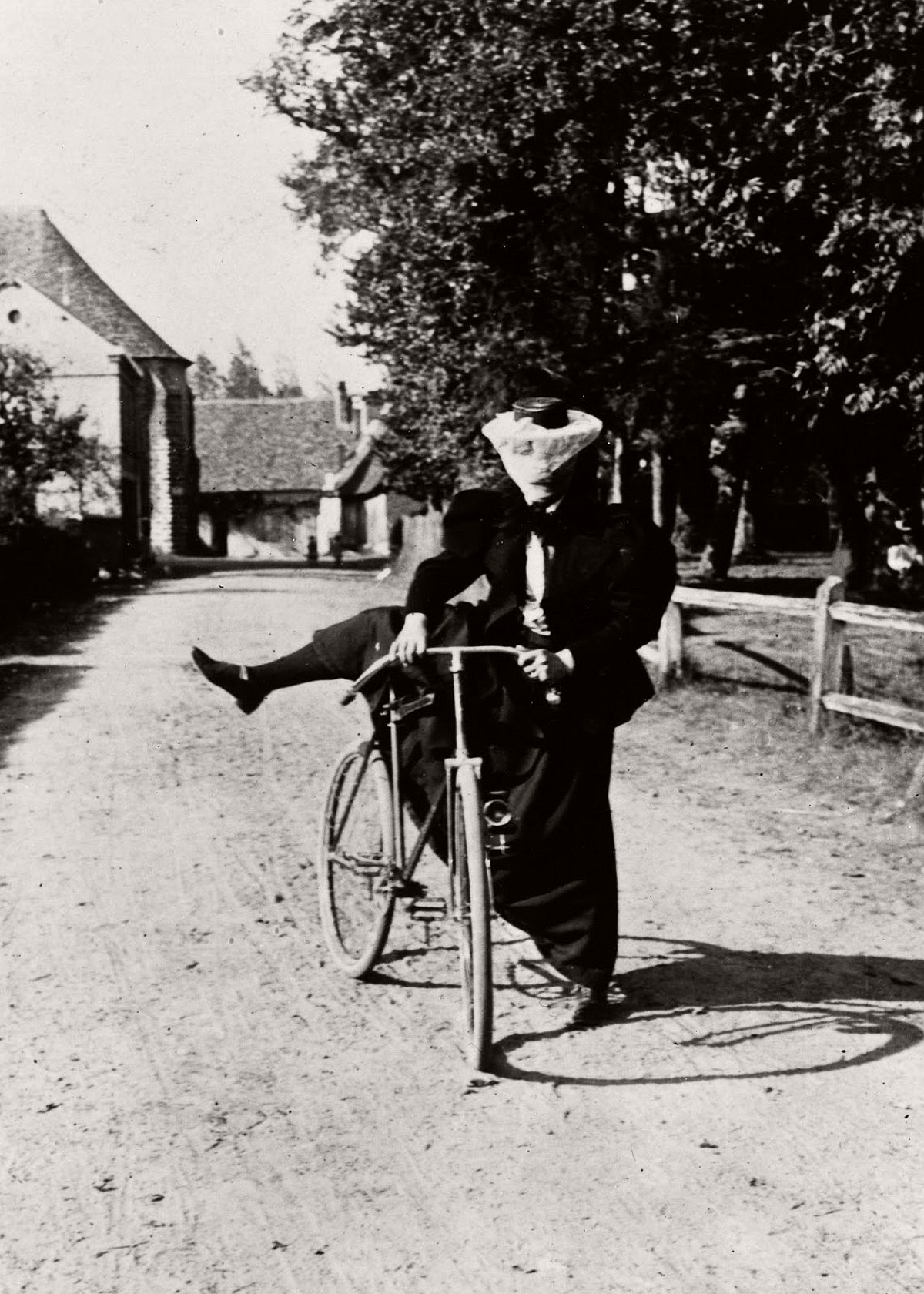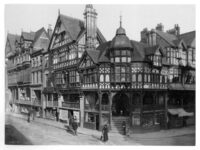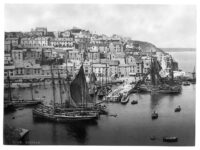The first verifiable claim for a practically used bicycle belongs to German Baron Karl von Drais, a civil servant to the Grand Duke of Baden in Germany. Drais invented his Laufmaschine (German for “running machine”) of 1817 that was called Draisine (English) or draisienne (French) by the press. Karl von Drais patented this design in 1818, which was the first commercially successful two-wheeled, steerable, human-propelled machine, commonly called a velocipede, and nicknamed hobby-horse or dandy horse. It was initially manufactured in Germany and France. Hans-Erhard Lessing found from circumstantial evidence that Drais’ interest in finding an alternative to the horse was the starvation and death of horses caused by crop failure in 1816, the Year Without a Summer following the volcanic eruption of Tambora in 1815). On his first reported ride from Mannheim on June 12, 1817, he covered 13 km (eight miles) in less than an hour. Constructed almost entirely of wood, the draisine weighed 22 kg (48 pounds), had brass bushings within the wheel bearings, iron shod wheels, a rear-wheel brake and 152 mm (6 inches) of trail of the front-wheel for a self-centering caster effect. This design was welcomed by mechanically minded men daring to balance, and several thousand copies were built and used, primarily in Western Europe and in North America. Its popularity rapidly faded when, partly due to increasing numbers of accidents, some city authorities began to prohibit its use. However, in 1866 Paris a Chinese visitor named Bin Chun could still observe foot-pushed velocipedes.

UNITED KINGDOM – JUNE 30: Photograph. There were various forms of ‘pedamotive carriage’ or velocipede during the 19th century. It was an early form of bicycle which was propelled forward by the rider pedalling cranks fixed to the front wheel(s). Interest in velocipedes dropped after the introduction of the bicycle in the form we know it today, which was both cheaper and less cumbersome. (Photo by SSPL/Getty Images)
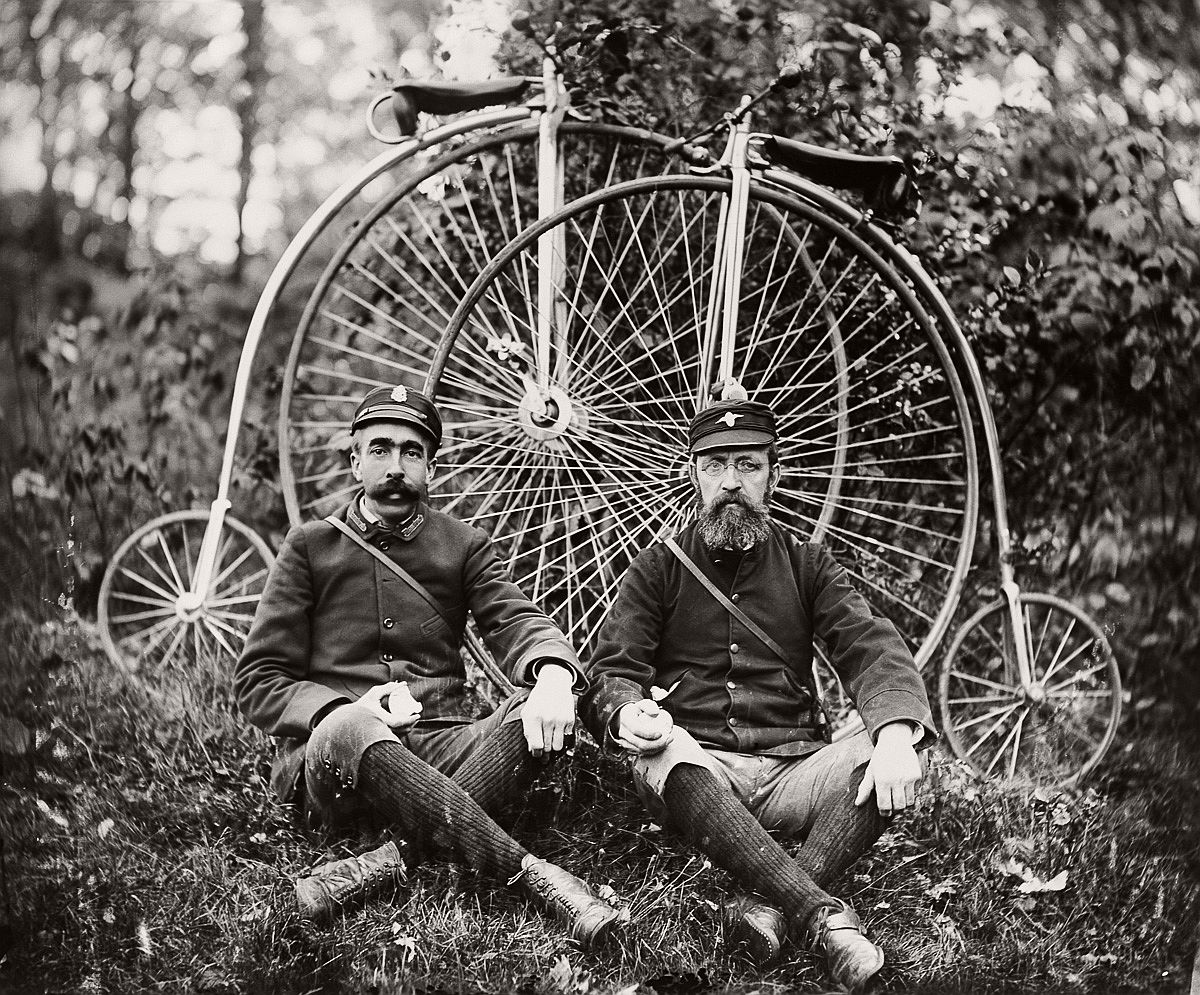
ca. 1890 — Original caption: American wheelmen reposing in the woods. Photograph, ca. 1890. — Image by © Corbis
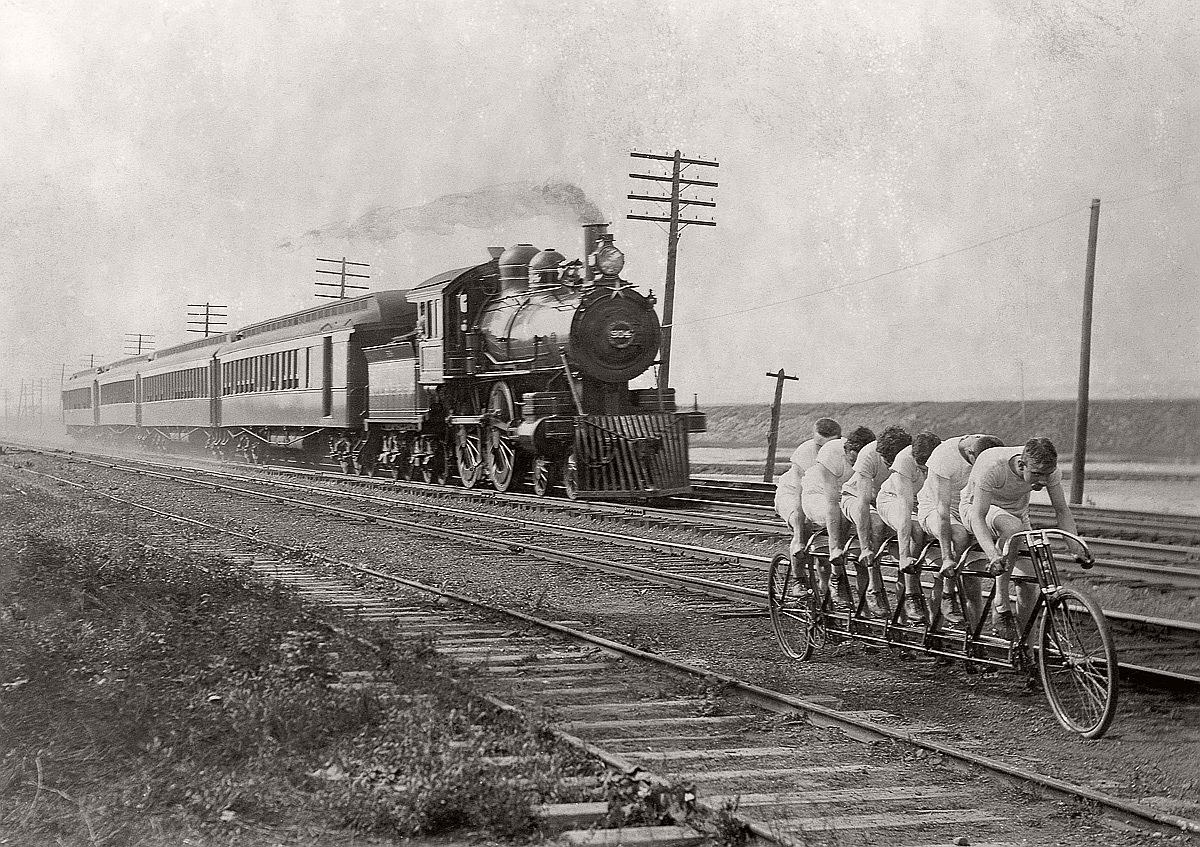
ca. 1896 — Men calling themselves the Stearns Sextuplets race a six-man bicycle against the Empire State Express, a steam locomotive pulling four cars. — Image by © CORBIS
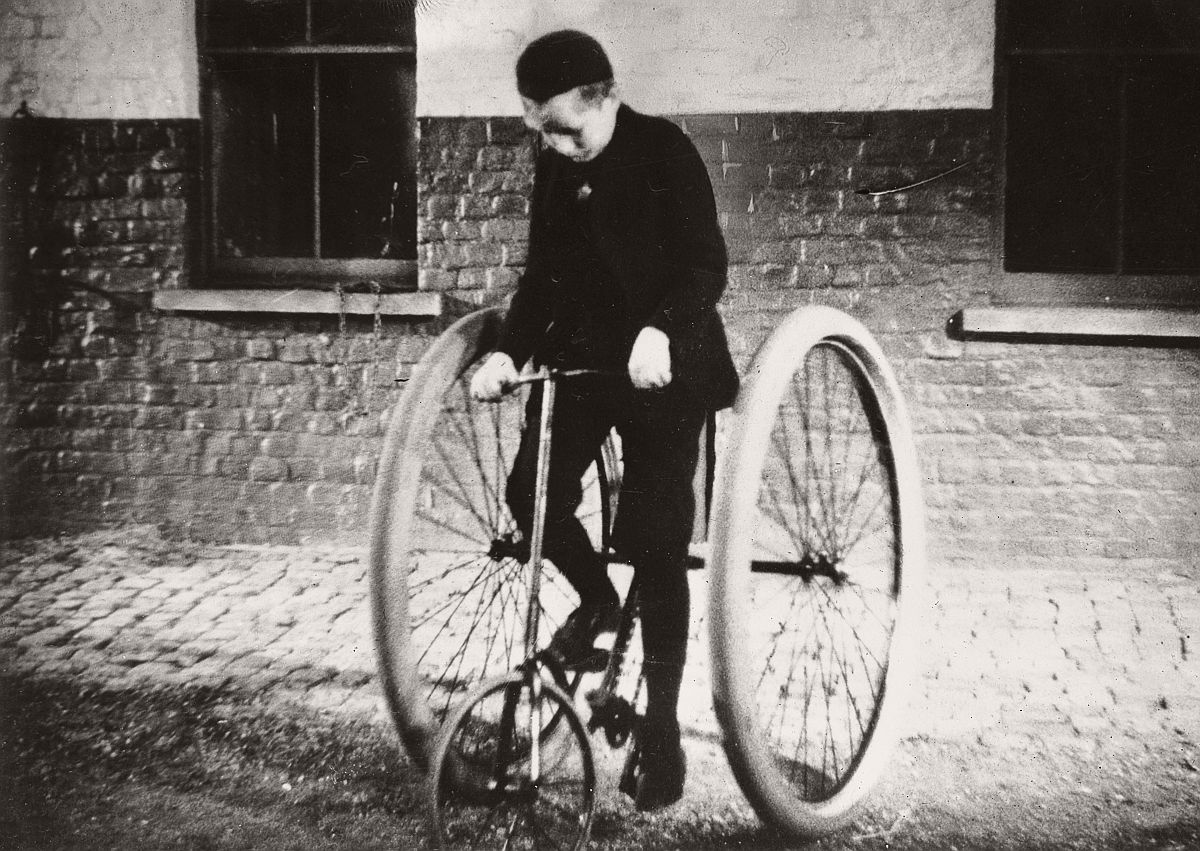
IRELAND – 1888: John Boyd Dunlop (b. February 5, 1840 – d. October 23, 1921), a Scottish inventor, re-built the tires of a tricycle in 1887 for his 10-year-old son (pictured). The invention included a tire tube made of a rubber surrounding an envelope of fabric, which was inflated with an air pump. By 1888, Dunlop patented what was the first practical pneumatic tire which formed the foundation for the Dunlop Tire Company and was the beginning of the modern tire industry. (Photo by Jacques Boyer/Roger Viollet/Getty Images)

(GERMANY OUT) The first world championship cycling race in Berlin, 1889; at right the first world champion August Lehr – reproduction, about 1930 – Published in: ‘Berliner Illustrirte Zeitung’; 41/1935 Vintage property of ullstein bild (Photo by ullstein bild/ullstein bild via Getty Images)
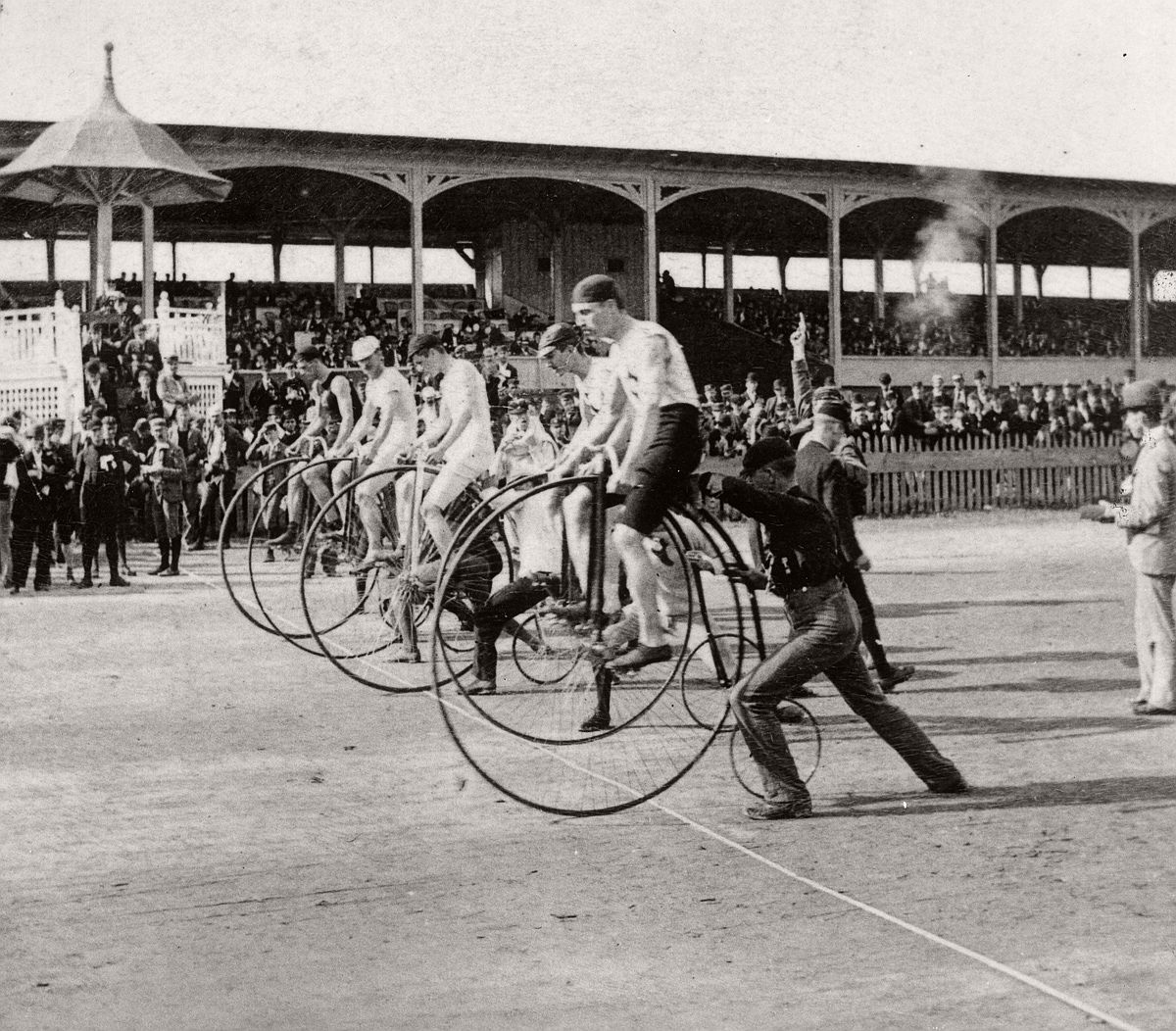
1890: A cycle-race at a stadium in New York. The pneumatic tyre had not yet come into use in the US. Another peculiarity of the race was the type of bicycle, which had already been superseded in England. (Photo by George Barker/Henry Guttmann/Getty Images)

UNITED KINGDOM – JULY 14: Photograph from an album of prints collected by English motorist, motor car manufacturer and aviator, Charles Stewart Rolls (1877-1910). Rolls is pictured riding a tandem with his friend Legard whilst they were students at Cambridge University, where Rolls gained a BA and an MA in engineering. He founded Rolls-Royce Ltd in 1906 with Sir Frederick Henry Royce (1863-1933), creating one of the most famous motoring companies in the world. Rolls was a keen aviator, making the first non-stop double crossing of the English Channel by aeroplane. He was killed in 1910 when his plane crashed at the Bournemouth Air Show. (Photo by SSPL/Getty Images)

FRANCE – JULY 14: Photograph showing seven Frenchmen on a seven-seater bicycle, taken from an album of pictures collected by Charles Stewart Rolls (1877-1910), English motor car manufacturer and aviator. Rolls founded Rolls-Royce Ltd with Frederick Henry Royce (1863-1933) in 1906, creating one of the world’s most famous motoring companies. He was a well known and successful competitor in motor races of the time, and was also a keen aviator, becoming the first person to make a non-stop double crossing of the English Channel in a aeroplane. He was killed in 1910 when his plane crashed at the Bournemouth Air Show. (Photo by SSPL/Getty Images)

